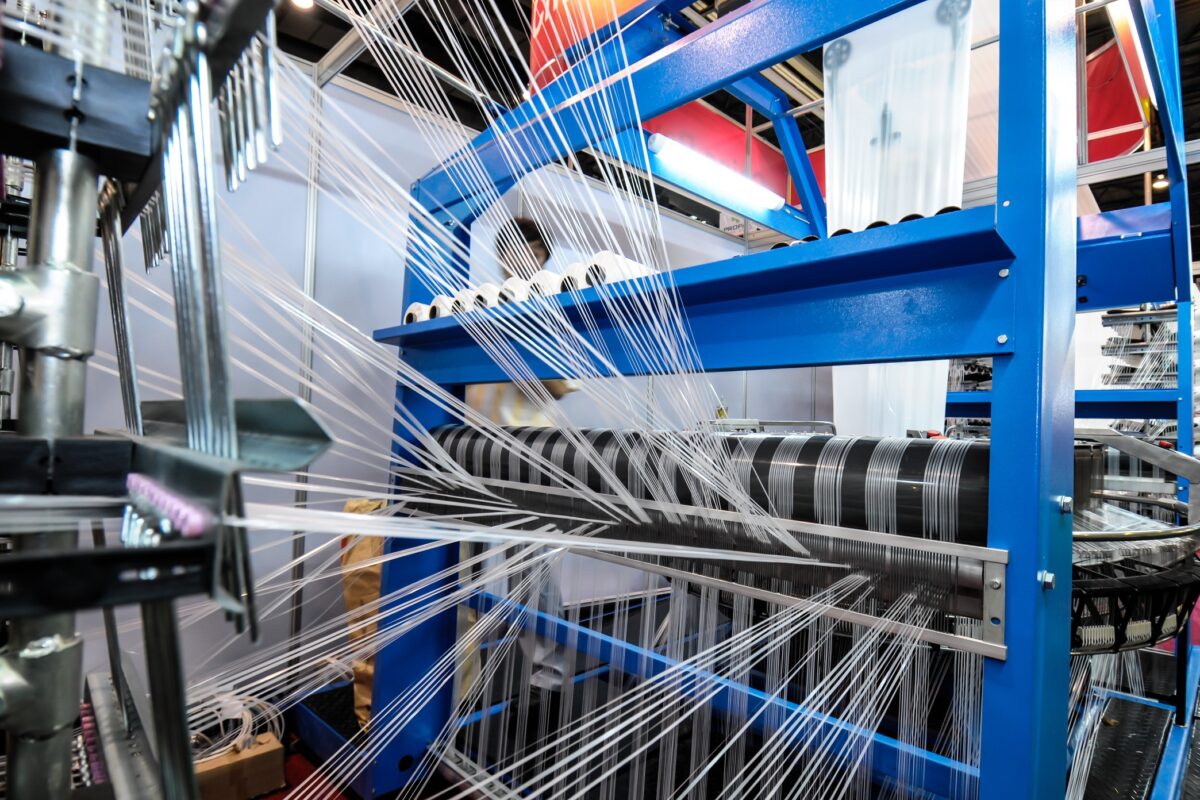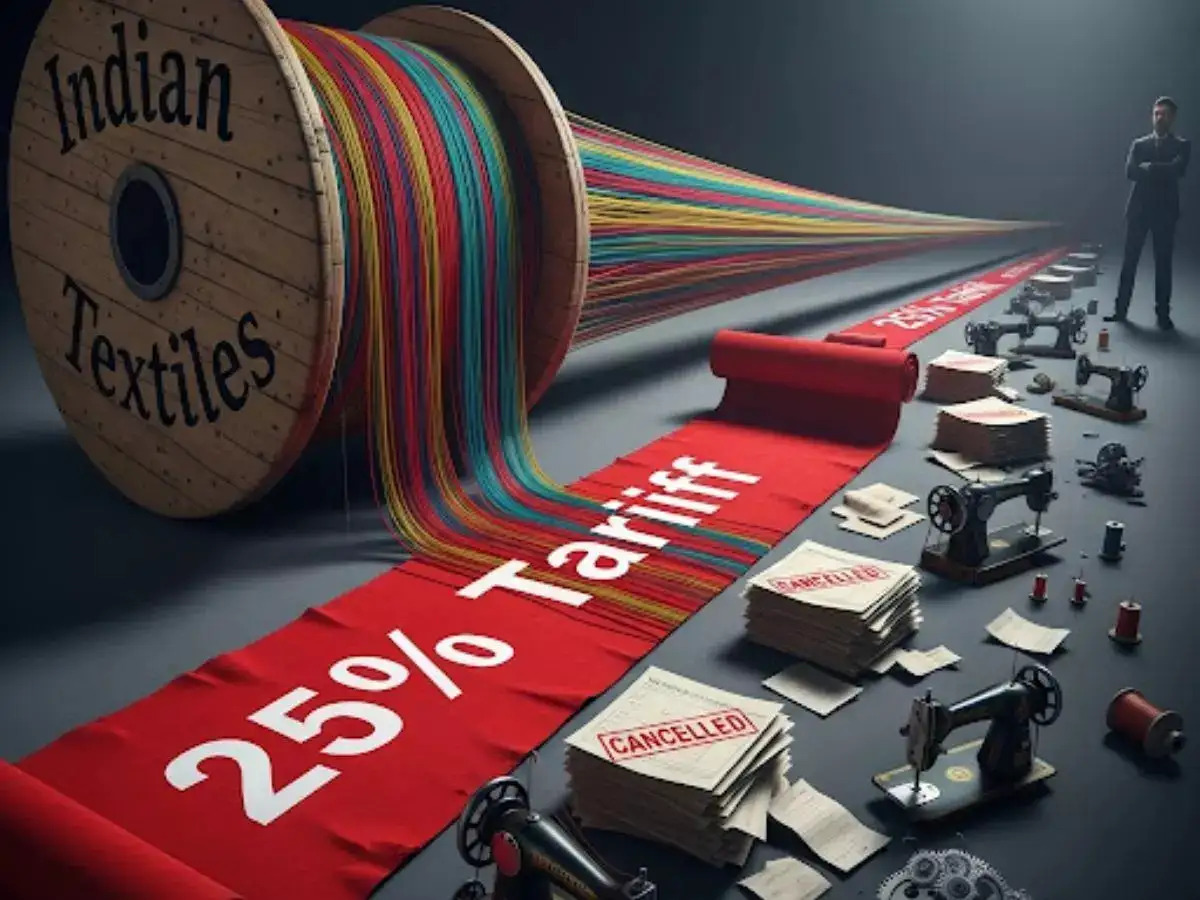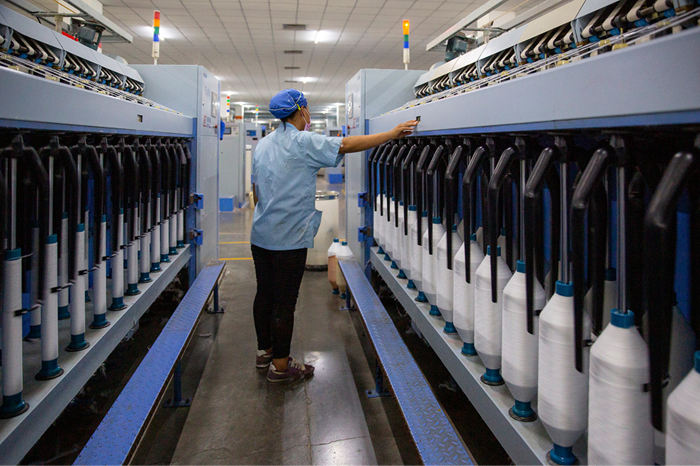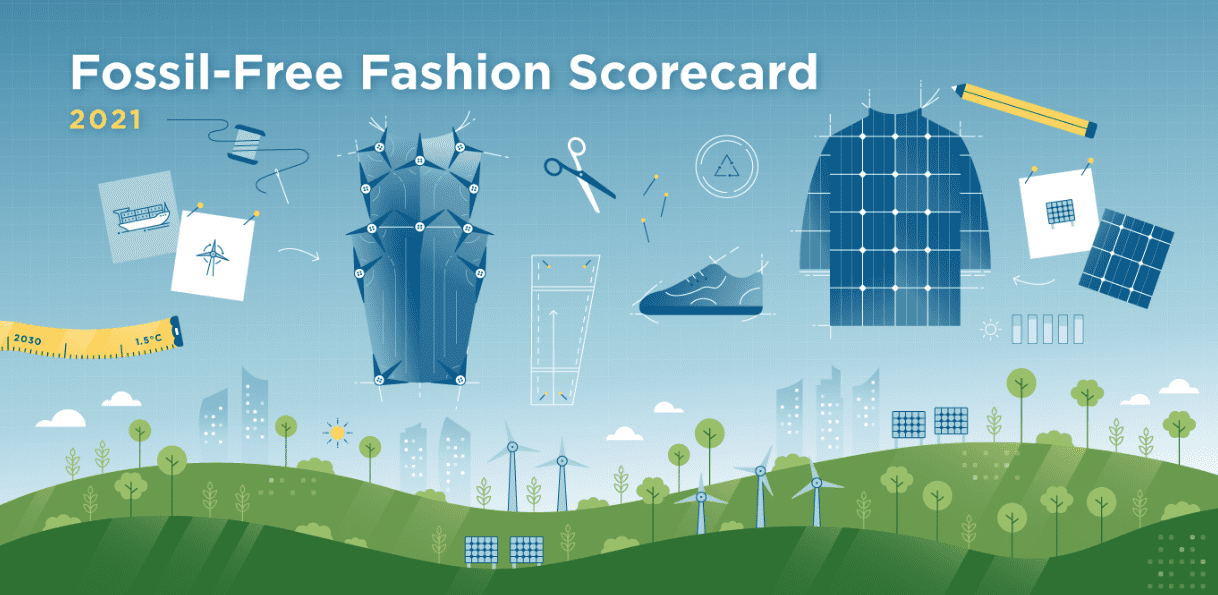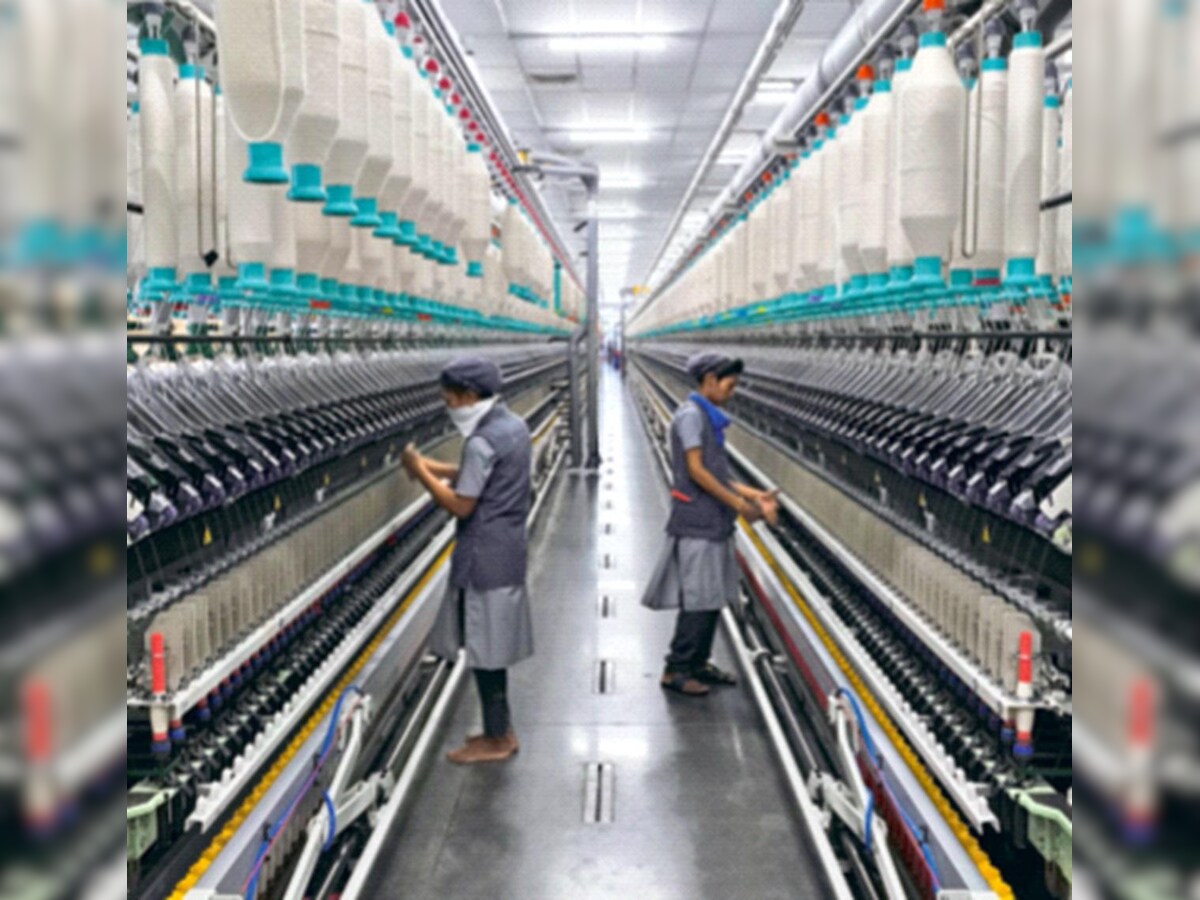FW
As per the latest figures from the Department of Commerce’s Office of Textiles and Apparel (OTEXA) the volume of US apparel imports from all sources grew 4.8 per cent year-on-year in September 2015, down from the 13.5 per cent increase in August 2015. Imports reached 2.69 billion square metre equivalents (SME), up from 2.56 billion SME in September last year 2014

In September 2015 apparel imports into the US continued its upward trajectory, with seven of the top 10 supplier countries booking year-on-year growth. Despite rising wages and strong currency, China continues to be the largest exporter, keeping the TPP benefits in mind, Vietnam too received an encouraging response from the western buyers.
Bangladesh exports rise 21.15 per cent
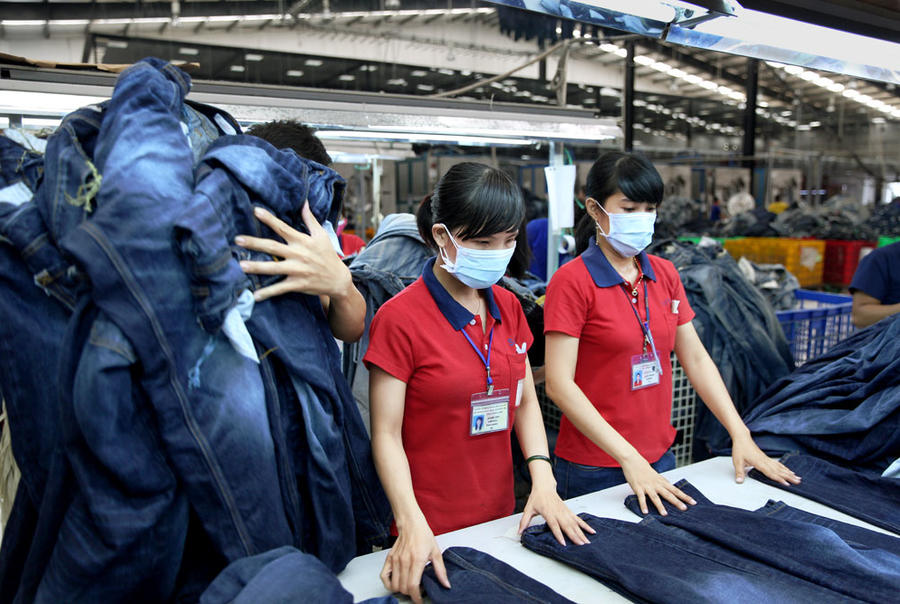
As per the latest figures from the Department of Commerce’s Office of Textiles and Apparel (OTEXA) the volume of US apparel imports from all sources grew 4.8 per cent year-on-year in September 2015, down from the 13.5 per cent increase in August 2015. Imports reached 2.69 billion square metre equivalents (SME), up from 2.56 billion SME in September last year 2014.
Official data showed that Bangladesh’s exports rose 21.15 percent to $2.37 billion in October 2015 from a year earlier, driven by stronger overseas sales of garments. The Export Promotion Bureau (EPB) said that exports from July to October, the first four months of the 2015-2016 financial years, rose nearly 5 per cent to $10.13 billion from the same period a year earlier, 3 percent short of the target. Sales of garments, comprising woven items and knitwear, totaled $8.24 billion in the July-October (2015) period, compared with nearly $7.75 billion a year earlier.
Breaking it down into individual supplier countries, seven of the top 10 recorded growth shipments from China – the largest supplier of apparel to the US – were up 1.48 per cent to 1.32 billion SME. Nearest rival Vietnam grew 10.6 per cent to 281 million SME, compared to the same month September a year back in 2014. Bangladesh, ranked number three in the top-ten league table, saw apparel shipments rise 41.6 per cent to 157 million SME.
Of the remaining supplier countries, Indonesia recorded the strongest growth at 16 per cent to reach 99 million SME, followed by El Salvador up 13.8 per cent to 76 million SME and Pakistan up 13 per cent to 51 million SME. Year-on-year import gains were also reported by India up 10.5 per cent to 74 million SME. However, three countries saw apparel shipments decline during September 2015. Cambodia recorded the largest drop at 3.52 per cent to 109 million SME, followed by Honduras down 3.5 per cent to 101 million SME, and Mexico down 1.74 per cent to 72 million SME.
China, Vietnam gain despite hiccups
Despite increasing wages posing as a deterrent to its competitiveness on the global stage, China continued to lead the way when it comes to efficiency and infrastructure. Rising prices are largely being offset by productivity gains and China continues to be the compelling source for apparel buyers. With its 10,916 garment manufacturers with annual sales above CNY20 million churning out 29.6 billion pieces in 2014, up 1.6 per cent year-on-year, experts say that no country can match China in terms of the size of its supply base.
Official data also indicates that the overall weakening of China’s manufacturing industry has slowed down, prompting hopes the government’s stimulation efforts are starting to take effect.
Vietnam on the other hand is benefiting as producers and buyers diversify their supply chains to the country keeping the opportunities Trans-Pacific Partnership would open for then. China sensing the after-effect of TPP has already started moving large volume of its investments to Vietnam to boost its garment sector and take advantage of the TPP.
According to data from Office of Textiles and Apparels under the US Commerce Department the TPP final deal has started pinching Bangladesh RMG sector though it is yet to be signed. Bangladesh apparels export to the US market grew 11.40 per cent while Vietnam export to the US market rose to 13.86 per cent during the last 10 months from January to October of 2015. During the said period Bangladesh earned $4.66 billion and Vietnam earned $9.03 billion from their RMG exports to the US. Movement within the top three – China, Vietnam and Bangladesh – during the seven months of year 2015 shows China rose 7.2 per cent to 8.69 billion SME, Vietnam grew 15.2 per cent to 2.38 billion SME, and Bangladesh increased 13.8 per cent to 1.43 billion SME.
The other winners included India up 7.2 per cent to 799 million SME; Cambodia up 4.2 per cent to 816 million SME; Honduras up 3.8 per cent to 837 million SME; El Salvador up 2.2 per cent to 609 million SME; and Pakistan up 0.4 per cent to 448 million SME. However, Mexico saw apparel shipments drop 0.6 per cent to 692 million SME, while Indonesia’s shipments were down 0.5 per cent to 960 million SME. A broader view of the year 2015 indicates that total US apparel and textile imports increased 8.92 per cent between January and September to reach 48.43 billion SME from 44.46 billion SME last year.
Otexa.ita.doc.gov
For the fourth consecutive year, reshoring of manufacturing operations to the United States has once again failed to keep up with offshoring. The reshoring trend seems to be over before it has started. But foreign companies, including many from China, are the ones most eager to invest in US manufacturing.
In contrast offshoring seems to be gathering steam. Industries vulnerable to rising labor costs in China have been successfully relocating to other Asian countries, rather than returning to the United States. They have done so without incurring significantly higher supply chain costs, despite the weaker infrastructure and supporting ecosystems of these new low labor cost destinations.
Vietnam has absorbed the lion’s share of China’s manufacturing outflow, especially in apparel. US imports of manufactured goods from Vietnam in 2015 will be nearly triple the level of imports in 2010. Surprisingly some of the top sectors for reshoring from 2011 to 2015 are also sectors that have led the pack in further offshoring over that same period.
Although reshoring of manufacturing by US companies is on the decline, non-US companies, including Chinese companies, increasingly invest in establishing or expanding their manufacturing footprint in the United States. The insatiable US consumer market, the stable political and economic environment, and the benefit of tapping into American engineering skills and manufacturing know-how are the main draws.
Premiere Vision New York will take place on January 19 and 20, 2016. Known for its premium offer of fabrics, accessories and textile designs, the show has now broadened to include leather and manufacturing. The event, a North American market leader, has become an unique destination for buyers to develop collections. The Trend Forum displays major trends through a selection of exhibitors’ most distinctive samples: accessories, fabrics, leather. The forum is also a useful way of finding suppliers.
This season, the denim and couture exhibit explores the new connections between denim couture and tailoring. The 30 companies premiering in the leather space are distinguished by the exceptional quality of products for both clothing and high end leather goods.
The manufacturing universe welcomes 26 specialists with multiple know-hows for women’s wear and men’s wear, particularly for high-end suits. There is a notable presence of several Moroccan companies, Portuguese companies Goucam and Montagut and the Japanese knit specialist Shima Seiki.
The show also hosts Manufacture New York, a consortium of fashion entrepreneurs, high end manufacturers, technologists and educators showcasing an innovative vision of a vertically integrated Made in NY supply chain. There will be panel discussions and demonstrations of fashion’s best equipment and techniques.
www.premierevision-newyork.com/
China’s production of cotton is down 9.3 per cent year on year. Total cotton-growing area in 2015 was down 10 per cent from 2014. China has a state stockpile of close to 11 million tons of cotton, due to a now-abandoned state scheme to support farmers. Efforts to sell some of its stocks earlier this year had limited success, partly because of weak demand for cotton fiber from the downstream market, a trend that has persisted for much of the year.
Poor summer weather pulled down yields. Weakening cotton prices since the beginning of this year damped cotton growers’ planting and caused a slump of the cotton planting area and output. Xinjiang usually produces around 60 per cent of China’s cotton. But high temperatures in the region this summer caused a high rate of shedding of cotton bolls, or pods containing the fiber’s seeds, reducing yields and the length of the region’s prized long staple fiber. Rainy weather and early cold weather later in the year further reduced output.
Output in other parts of the country was largely impacted by a smaller planted acreage, with provinces outside Xinjiang planting 16.5 per cent less cotton than in 2014.
Readymade garment export earnings comprise 18 per cent of Bangladesh's GDP and 80 per cent of its total exports. More than 80 per cent of its export-oriented factories have been inspected and found with upgraded safety facilities. However, Bangladesh, the world's second largest garment producer after China, is likely to face new challenges from Myanmar and Ethiopia which entered the low-wage garment market last year drawing a growing number of export orders.
Another rival to Bangladesh in apparel exports, Vietnam is also expected to get additional benefits from lower production costs under the 12-country Trans-Pacific Partnership. Production capacity and price appear to trump safety and labor when it comes to choosing where to source clothes. Bangladesh has suffered more industrial disasters than any other garment-producing country. But its low minimum wage and high number of garment factories have made it a magnet for global retailers.
For now, China remains the world’s largest garment producer by far. But its minimum wage is four times the monthly base rate of Bangladesh. The country’s clothing industry has the advantage of scale: it has 5,000 factories, compared with 2,500 in Indonesia and 2,000 in Vietnam. Unlike clothes put together in China and Sri Lanka, those stitched in Bangladesh enjoy duty-free access to the European Union.
On December 9, 2015, the Federal Trade Commission, while addressing the complaints received against BackCountry.com LLC, Bed Bath & Beyond, J.C. Penney and Nordstrom, proposed court orders barring them from mislabelling and advertising rayon textiles as made of bamboo. FTC also directed them to pay civil penalties totalling $1.3 million. The agency also sent letters to other unspecified retailers, asking them to help protect consumers from deceptive bamboo claims by checking inventories and making certain that rayon textile products have appropriate labelling.
The FTC has been long fighting companies who textiles containing rayon continue to label as bamboo or as containing bamboo fibre, to market their products as sustainable, eco-friendly, or naturally antimicrobial. FTC points out that this is misleading since most textiles labelled as bamboo are rayon, which is a type of fibre manufactured from cellulose, typically made using environmentally toxic chemicals in a process that emits hazardous pollutants into the air. While different plants, including bamboo, can be used as a source material to create rayon, there is no trace of the original plant in the finished rayon product.
In 2009, the agency settled bamboo-related complaints against four apparel and textile companies. False claims included that products made with rayon from bamboo contained 100 per cent bamboo fibre, were more eco-friendly than comparable goods, and retained the bamboo plant’s inherent antimicrobial properties. That same year, the FTC issued guidance for manufacturers and retailers of clothing, linens, or other textile products, titled “How to Avoid Bamboozling Your Customers.” The agency advised, “If your product isn’t made directly from bamboo fibre, it can’t be called bamboo,” but must be described as either rayon (or viscose), or “rayon made from bamboo.”
www.ftc.gov
The Centre has brought genetically modified (Bt) cotton seeds under price controls. According to a notification issued by the agriculture ministry, the decision was taken in view of farmers finding the seeds “to be highly priced” and the need to bring “uniformity” in their prices across the country.
Bt cotton was first introduced in India in 2003 and in a couple of years it found takers in almost all parts of the country. About 90 per cent of the country’s cotton area of roughly 11.8 million hectares in 2015-16 is under the Bt coverage, suggests an industry estimate.
The ministry invoked the Seed (Controls) Order, 1983, issued under the Essential Commodities Act, to impose price controls on Bt cotton seeds, but hasn’t fixed a pan-India maximum selling price (MSP). Taking a cue from states like Maharashtra and Andhra Pradesh, it, however, stated that the MSP would mean the “maximum price inclusive of seed value, license fee, trade margin and local taxes or duties, at which the cotton seeds or transgenic varieties of cotton seeds are sold to the farmers”.
States of Maharashtra and Andhra Pradesh had earlier put a cap on prices of Bt cotton seeds including the “trait fee” charged by the US-based multinational Monsanto which has proprietary rights over the gene (Bacillus thuringiensis) that accords the Bt cotton its pest-resistant property. The move could hit Monsanto hard. The agri-biotech major, along with Maharashtra-based Mahyco, is currently fighting “non-payment of around Rs 450 crores” in royalty fees (trait value) by nine Bt cotton seed manufacturers. The current price of Bt cotton seeds to farmers, as fixed by the Maharashtra government, is around Rs 900 per packet.
“For the purpose of fixing maximum sale price, the government may constitute a committee under the chairmanship of Joint Secretary (Seed) and controller, department of agriculture, cooperation and farmers welfare to recommend maximum sale price of cotton seed after taking into consideration the components of seed value, license fee which includes one time and recurring royalty (trait value), trade margins and other taxes. The committee may take inputs from such persons or associations or authority, as may be necessary for working out the maximum sale price of the cotton seed,” according to the notification.
Agricoop.nic.in
Vadim Solovyov, the Deputy Chairman of the Duma Committee on constitutional legislation and state construction and a member of the Communist Party has said to have written to Prime Minister Dmitry Medvedev and the Minister of Industry and Trade Denis Manturov to take action against the unofficial ban on the import of Turkish fabrics and textile products into Russia.
On the other hand, the Deputy head of the Ministry of Industry and Trade of the Russian Federation Victor Evtukhov recently announced that such ban could be formally established for Turkish textile products after Turkey attacked Russian SU-24 on November 24, 2015. The Department already proposed to ban the import of 70-80 per cent of light industry goods from Turkey. This may create problems to international retailers, producing clothing in Turkey for Russia, including brands like Zara, Mango, Lacoste and Adidas.
According to official statistics, Turkey's ready-to-wear textile exports declined by 10.3 per cent year on year in the first 11 months of 2015, totaling $15.6 billion. Following the jet crisis, total volume of Turkish exports decreased by 8.6 per cent to $132 billion between January and November, compared to the same period a year ago.
With an aim to train skilled workforce for the rapidly growing export and domestic sectors of the apparel industry and upgrade the technical skills to improve quality, productivity and efficiency Apparel Training and Design Centre (ATDC) recently introduced ‘Shram Bhawan’ in Gangtok.
Pawan Chamling, Chief Minister of Sikkim inaugurated the centre at Sokeythang, Gangtok. The inaugural function was attended by Darlie Koshy DG & CEO ATDC & IAM in the presence of D.D Bhutia, Minister, Department of Labour, Govt of Sikkim, and K. Jayakumar, Principal Secretary, Labour & Skill Development and Entrepreneurship Department.
ATDC has signed an MoU with Labour & Skill Development and Entrepreneurship Department for one year. The MoU was signed between Darlie Koshy, DG&CEO, ATDC & IAM and K. Jayakumar, Principal Secretary, Labour & Skill Development and Entrepreneurship Department. Under this MoU Labour & Skill Development and Entrepreneurship Department will sponsor 300 students of ATDC. The new centre is well equipped with sewing machines labs, CAD lab for computerised pattern making, computer embroidery machine, and resource centre. It will offer short term programs under ISDS, MOT, GOI (ATDC-SMART) for 300 hours.
Pawan Chamling, distributed the ATDC Tool kits to the students and he even took keen interest in the technologically advanced machines and the training systems and conferred recognition of the state government to ATDC.
www.atdcindia.co.in
Gujarat government recently announced 14 per cent rise in minimum support price (MSP) for cotton. The move is not welcomed by the farmers who were expected to benefit from the same. After losing recent local body elections to Congress in the rural areas, the BJP-led state government announced a bonus of Rs 110 per 20 kg on cotton to please the farmers.
However, even after getting the bonus, MSP would be Rs 920 per 20 kg, up to six per cent less than the market price of Rs 950-980. Also the government’s move is quite delayed since many farmers have already sold their cotton in the month of October, the beginning of the season. The state government's Rs 110 per 20 kg bonus would be above the Centre's MSP of Rs 810 for the cotton year (October-September) 2015-16. Union government had hiked its MSP by Rs 10 per 20 kg this year.
In September, Bharatiya Kisan Sangh (BKS), a farmers' organisation had asked for financial assistance for farmers in Gujarat. But now it is displeased since the announcement was made after farmers sold their produce at lower prices. According to industry sources, 40 per cent of the season's crop has already arrived in the market. Those who have holding capacity are expecting Rs 1,100 per 20 kg for raw cotton as there is a fear of crop damage due to pest.
Gujarat government will pay the bonus only on Cotton Corporation of India (CCI) procurement. Due to low MSP, the state-owned CCI has procured only 5,000 bales this year. Last year, CCI had purchased about 650,000 bales cotton from Gujarat.
Cotcorp.gov.in




